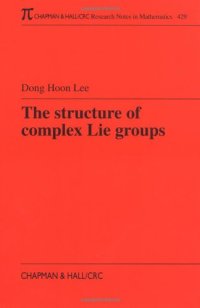
Ebook: Bayesian Spectrum Analysis and Parameter Estimation
Author: G. Larry Bretthorst (auth.)
- Genre: Mathematics // Probability
- Tags: Statistics general
- Series: Lecture Notes in Statistics 48
- Year: 1988
- Publisher: Springer-Verlag New York
- Edition: 1
- Language: English
- pdf
This work is essentially an extensive revision of my Ph.D. dissertation, [1J. It 1S primarily a research document on the application of probability theory to the parameter estimation problem. The people who will be interested in this material are physicists, economists, and engineers who have to deal with data on a daily basis; consequently, we have included a great deal of introductory and tutorial material. Any person with the equivalent of the mathematics background required for the graduate level study of physics should be able to follow the material contained in this book, though not without eIfort. From the time the dissertation was written until now (approximately one year) our understanding of the parameter estimation problem has changed extensively. We have tried to incorporate what we have learned into this book. I am indebted to a number of people who have aided me in preparing this docu ment: Dr. C. Ray Smith, Steve Finney, Juana Sunchez, Matthew Self, and Dr. Pat Gibbons who acted as readers and editors. In addition, I must extend my deepest thanks to Dr. Joseph Ackerman for his support during the time this manuscript was being prepared.
This book is primarily a research document on the application of probability theory to the parameter estimation problem. The people who will be interested in this material are physicists, chemists, economists, and engineers who have to deal with data on a daily basis; consequently, we have included a great deal of introductory and tutorial material. Any person with the equivalent of the mathematics background required for the graduate-level study of physics should be able to follow the material contained in this book, though not without effort. In this work we apply probability theory to the problem of estimating parameters in rather general models. In particular when the model consists of a single stationary sinusoid we show that the direct application of probability theory will yield frequency estimates an order of magnitude better than a discrete Fourier transform in signal-to-noise of one. Latter, we generalize the problem and show that probability theory can separate two close frequencies long after the peaks in a discrete Fourier transform have merged.